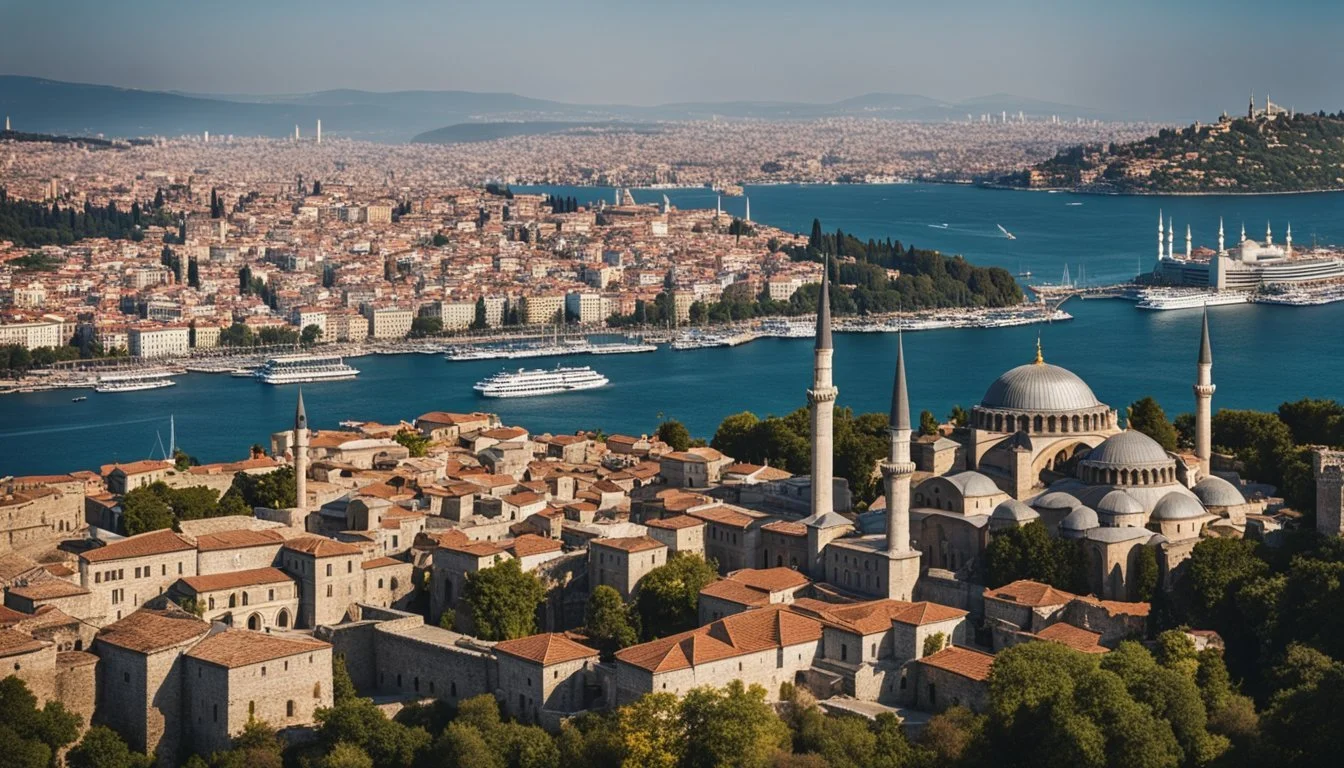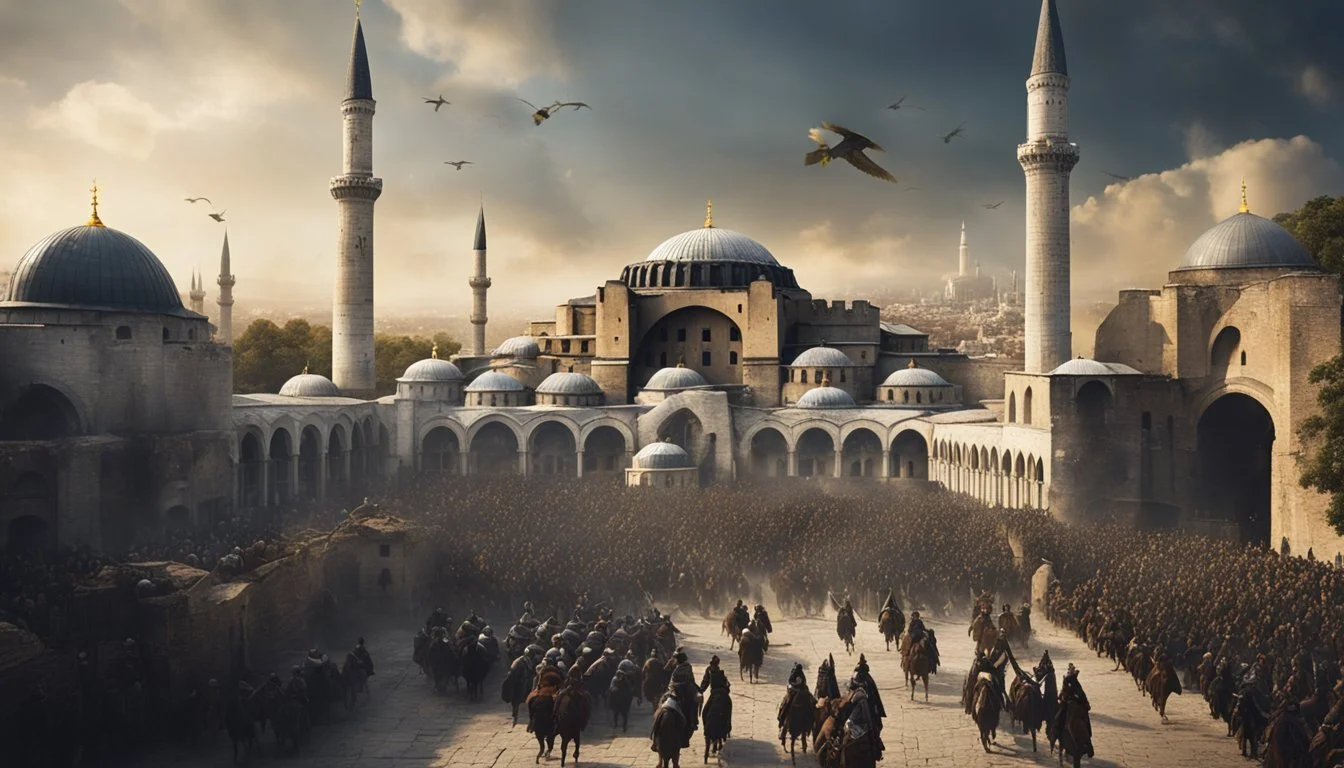5 Must-See Documentaries on the Fall of Constantinople
Essential Viewing for History Enthusiasts
The Fall of Constantinople in 1453 marked a pivotal moment in world history, signaling the end of the Byzantine Empire and the rise of Ottoman power. This monumental event has captivated historians, scholars, and filmmakers for centuries. Documentaries on the Fall of Constantinople offer viewers a compelling visual journey through time, bringing to life the dramatic siege and its far-reaching consequences.
For those interested in delving deeper into this historical turning point, numerous documentaries provide insight into the strategies, personalities, and cultural impacts surrounding the fall of Constantinople. These films combine expert analysis, historical reenactments, and archival materials to paint a vivid picture of the events that unfolded during those fateful days in 1453.
1) 1453: The Fall of Constantinople (2007)
This documentary explores the pivotal siege of Constantinople in 1453. It recounts how Sultan Mehmed II's Ottoman forces conquered the Byzantine capital after a 53-day siege.
The film examines the military tactics and technologies used by both sides. It highlights the Ottomans' innovative use of massive cannons to breach the city's legendary walls.
Constantinople's fall marked the end of the Byzantine Empire and a major shift in geopolitics. The documentary explains how this event opened a new chapter in European and Middle Eastern history.
Viewers learn about key figures like Emperor Constantine XI and Sultan Mehmed II. The film also depicts the final dramatic battle as Ottoman troops poured into the city.
Through expert interviews and historical reenactments, this documentary brings the siege to life. It provides an engaging look at one of history's most consequential military campaigns.
2) Sultan and the Saint (2016)
This documentary explores the remarkable encounter between Saint Francis of Assisi and Sultan Malik al-Kamil during the Fifth Crusade. The film depicts their meeting against the backdrop of ongoing conflict between Christian and Muslim forces.
Set in the 13th century, it highlights a pivotal moment when two men from opposing faiths engaged in peaceful dialogue. The documentary examines how Francis, despite initial hostility, sought to end the bloodshed through diplomatic means.
Sultan Malik al-Kamil is portrayed as a wise ruler open to discussions with the Christian friar. Their conversations centered on finding common ground between Islam and Christianity, challenging prevalent prejudices of the time.
The film uses reenactments and expert interviews to bring this historical event to life. It emphasizes the potential for understanding between different cultures and religions, even in times of war.
While not directly about Constantinople's fall, this documentary provides context for the broader Crusade era. It showcases an example of peaceful interaction amidst the conflicts that ultimately led to the city's demise.
3) Empires at War: The Battle for Byzantium (2013)
"Empires at War: The Battle for Byzantium" offers a comprehensive look at the fall of Constantinople. This documentary explores the events leading up to the city's capture by Ottoman forces in 1453.
The film presents a balanced view of both Byzantine and Ottoman perspectives. It examines the military strategies and technological advancements that played crucial roles in the siege.
Viewers gain insights into the political climate of the time and the religious tensions that fueled the conflict. The documentary uses expert interviews and historical reenactments to bring the story to life.
"Empires at War" provides a detailed account of the final battle for Constantinople. It highlights key figures such as Emperor Constantine XI and Sultan Mehmed II, showcasing their leadership during this pivotal moment in history.
The film also touches on the long-term consequences of Constantinople's fall, including its impact on European trade and the spread of Renaissance ideas.
4) The Conquest of Constantinople: A Turning Point
The fall of Constantinople in 1453 marked a pivotal moment in world history. This event ended the Byzantine Empire and ushered in a new era of Ottoman dominance.
The documentary "Fall of Constantinople 1453 - Ottoman Wars" (2018) offers a detailed account of this momentous siege. It explores the tactics employed by the Ottoman forces under Sultan Mehmed II to breach the city's formidable walls.
The film highlights the technological advancements that gave the Ottomans an edge, including their use of massive cannons. These weapons proved crucial in overcoming Constantinople's defenses, which had withstood numerous sieges over the centuries.
The documentary also examines the impact of the city's fall on trade routes and cultural exchanges between East and West. Constantinople's transformation into Istanbul as the new Ottoman capital had far-reaching consequences for global politics and commerce.
Viewers gain insight into the last stand of Emperor Constantine XI and the final days of the Byzantine Empire. The film presents a balanced view of both the Ottoman and Byzantine perspectives on this world-changing event.
5) Rise of Empires: Ottoman (2020)
This documentary series chronicles the life and conquests of Ottoman Sultan Mehmed II, focusing on his capture of Constantinople in 1453. It offers a blend of dramatic reenactments and expert commentary to bring the historical events to life.
The series explores Mehmed's strategic brilliance and determination in orchestrating the siege of Constantinople. It details the innovative military tactics and technologies employed by the Ottoman forces, including massive cannons used to breach the city's formidable walls.
Viewers gain insight into Mehmed's character and motivations as he transforms from a young sultan into a powerful conqueror. The political and religious significance of capturing the Byzantine capital is examined, along with its far-reaching consequences for both the Ottoman Empire and European history.
The fall of Constantinople is depicted in vivid detail, showcasing the fierce battles and eventual Ottoman triumph. The series also touches on Mehmed's subsequent conquests and his role in shaping the Ottoman Empire's expansion.
More information on Rise of Empires: Ottoman
Historical Context
The fall of Constantinople in 1453 marked a pivotal moment in world history, ending the Byzantine Empire and ushering in Ottoman rule. This event reshaped the political and cultural landscape of Europe and the Middle East for centuries to come.
Background of Constantinople
Constantinople, founded by Roman Emperor Constantine I in 330 AD, served as the capital of the Eastern Roman Empire for over a millennium. The city's strategic location on the Bosphorus Strait made it a crucial center for trade and cultural exchange between Europe and Asia.
Its imposing walls and natural defenses allowed it to withstand numerous sieges throughout its history. The city's wealth and grandeur earned it the nickname "Queen of Cities" in medieval Europe.
Constantinople's importance as a Christian stronghold grew over time, becoming the seat of the Orthodox Church and a symbol of Byzantine power and culture.
Byzantine Empire Overview
The Byzantine Empire, a continuation of the Roman Empire in the East, lasted for over a thousand years. At its height, it controlled vast territories spanning from Italy to the Middle East.
The empire faced numerous challenges throughout its existence, including invasions by Persians, Arabs, and Crusaders. Despite these setbacks, it maintained its cultural and political influence for centuries.
Byzantine culture blended Roman, Greek, and Christian elements, producing unique art, architecture, and literature. The empire preserved much of classical knowledge during the European Middle Ages.
By the 15th century, however, the once-mighty empire had shrunk to little more than Constantinople and its immediate surroundings. Internal political strife and external pressures from the rising Ottoman Empire contributed to its decline.
Key Events Leading to the Fall
The fall of Constantinople in 1453 resulted from a complex series of military and political developments. Ottoman forces employed innovative siege tactics while capitalizing on the declining Byzantine Empire's vulnerabilities.
Siege Tactics and Military Strategies
Ottoman forces utilized advanced artillery, including massive cannons that could breach Constantinople's formidable walls. They constructed a fleet of ships to blockade the city by sea and prevent reinforcements. The Ottomans also dug tunnels under the walls in attempts to undermine them.
Byzantine defenders countered with Greek fire, a flammable liquid weapon, and ingenious methods to repair damaged walls. They used chains to block the Golden Horn inlet, temporarily halting Ottoman naval attacks.
The final assault came on May 29, 1453. Ottoman troops breached the walls and poured into the city. Emperor Constantine XI died fighting alongside his soldiers, marking the end of the Byzantine Empire.
Role of the Ottomans
Sultan Mehmed II led the Ottoman forces, demonstrating strategic brilliance and determination. He reorganized the army, improved logistics, and personally oversaw siege operations. Mehmed's forces outnumbered the Byzantine defenders significantly.
Ottoman cannons, cast by Hungarian engineer Orban, played a crucial role. These massive guns could fire stone balls weighing up to 600 pounds, devastating Constantinople's defenses.
The Ottomans also leveraged internal divisions within the Byzantine Empire. Some Greek officials favored Ottoman rule over potential Latin Christian dominance, weakening unity among the defenders.
Mehmed's forces included elite Janissary troops, known for their discipline and combat skills. Their assault on May 29 proved decisive in breaking through the city's defenses.
Impact on the Modern World
The fall of Constantinople in 1453 had far-reaching effects that continue to shape our world today. This pivotal event altered the cultural and religious landscape of Europe and Asia while setting in motion geopolitical changes that reverberate centuries later.
Cultural and Religious Changes
The Ottoman conquest led to the transformation of Constantinople into Istanbul, a Muslim-majority city. Hagia Sophia, once Christianity's grandest church, was converted into a mosque. This symbolic change reflected the broader shift in the region's religious makeup.
Islamic culture and Ottoman Turkish language spread throughout the conquered territories. Many Greek scholars fled to Western Europe, bringing ancient texts and knowledge that helped fuel the Renaissance. This intellectual migration contributed to the revival of classical learning in Italy and beyond.
The fall also marked the end of the Byzantine Empire, the last vestige of the Roman Empire. This closure of a thousand-year chapter in history profoundly impacted European identity and self-perception.
Long-Term Consequences
The Ottoman Empire's expansion into Europe altered the balance of power. Venice and Genoa lost their trade monopolies in the eastern Mediterranean, shifting economic focus westward. This change accelerated European exploration of new trade routes, indirectly contributing to the Age of Discovery.
The fall of Constantinople strengthened Ottoman control over key trade routes between Europe and Asia. This dominance lasted for centuries, influencing global commerce and cultural exchange.
The event also spurred the development of gunpowder artillery. The Ottomans' successful use of cannons to breach Constantinople's walls led to rapid advancements in military technology across Europe.


